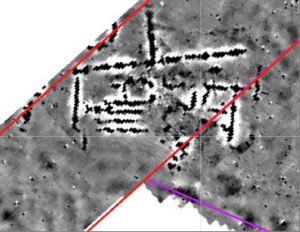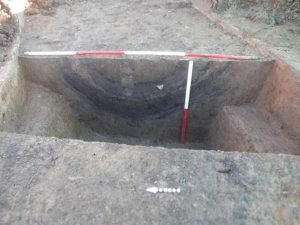A number of potential settlement sites were identified from the geophysical survey and confirmed by the trial trenching works.
Very few physical remains of buildings tend to survive in the ground as they are either built from degradable materials such as wood or wattle and daub, or useful stone is removed over time for newer structures. As such settlement sites are mostly identified from the remains of enclosure ditches, refuse pits and sometimes from foundation trenches for robbed out walls.
The majority of the settlement sites identified from the scheme appear to date from the Roman and medieval periods. This is not to say that this area of Lincolnshire was not inhabited before the Romans came, but that the earlier prehistoric remains are likely to be found at much deeper depths than the cable route is likely to go to.
The nature of the fen lands mean that regular inundations of water bring silts and clays with them that have greatly altered the ground levels over time



